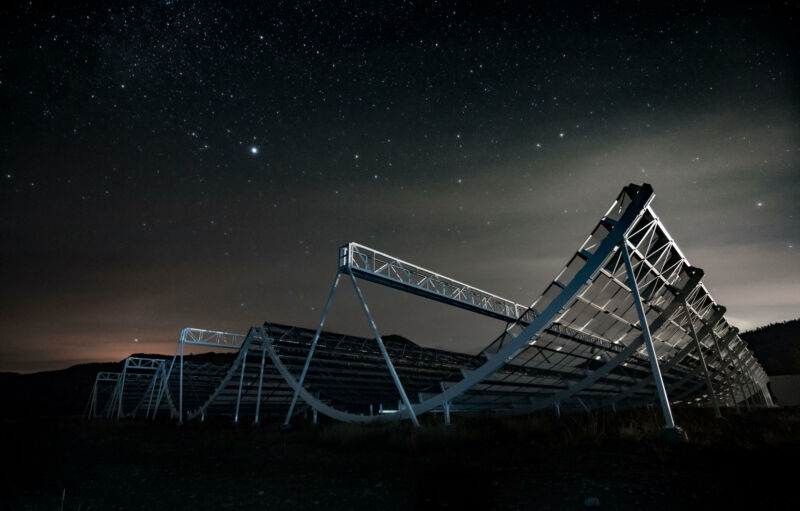Did we already observe our first “blitzar”?

Enlarge / The CHIME telescope has proven adept at picking up fast radio bursts. (credit: Andre Renard / CHIME Collaboration)
By combing through a collection of data, researchers may have discovered evidence that we've already observed the first "blitzar," a bizarre astronomical event caused by the sudden collapse of an overly massive neutron star. The event is driven by an earlier merger of two neutron stars; this creates an unstable intermediate neutron star, which is kept from collapsing immediately by its rapid spin. In a blitzar, the strong magnetic fields of the neutron star slow down its spin, causing it to collapse into a black hole several hours after the merger.
That collapse suddenly deletes the dynamo powering the magnetic fields, releasing their energy in the form of a fast radio burst. The researchers who performed the analysis suggest that this phenomenon could explain the non-repeating forms of these events.
Too big to liveHow big can a neutron star get before it collapses into a black hole? We don't have a good answer, in part because we're not sure what happens to the bizarre forms of matter inside one of these massive objects. We don't even know if the neutrons that give the star its name survive or fall apart into their component quarks. It's one of those annoying questions where the answer includes the phrase "it depends."